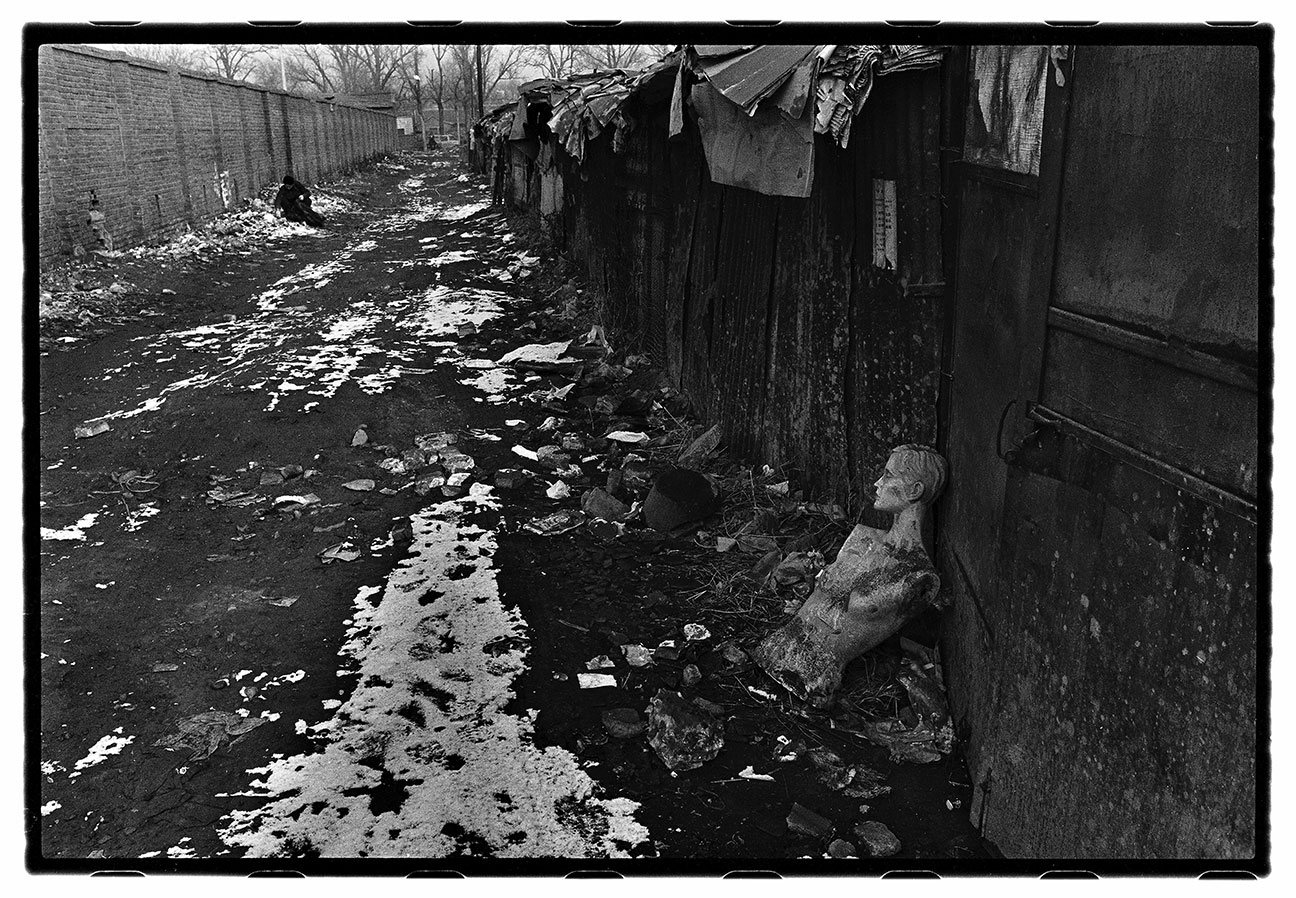« Reviews
Day After Day: Rong Rong and the Beijing East Village
The Walther Collection - New York
By Taliesin Thomas
There are certain pockets of visual history that encapsulate a period in such a way as to leave us captivated and devastated by beauty all at once, and a recent exhibition at The Walther Collection in New York-in connection with Three Shadows Photography Art Centre in Beijing-is one such stunning example. This exhibition features forty black and white photographs taken between 1993 and 1998 by the artist Rong Rong (b. 1968, Fujian Province, China). Those years were a time of intense exploration and experimentation among a cohort of Chinese artists in an artistic community that was fiercely radical and fundamentally avant-garde. The famed ‘Beijing East Village’ (dubbed by artist Ai Weiwei upon his return to Beijing after living a decade in the East Village of Manhattan) represents an apex moment in the development of this field. After the locale dissolved in the late 90s, most of the artists associated with the place went on to claim their spot on the international art world stage or to further contribute to the local energy of the Chinese capitol, as in the case of Rong Rong, the founder of Three Shadows.

Rong Rong, East Village Beijing No. 2, 1993, gelatin silver print. Courtesy of the artist and Three Shadows Photography Center, Beijing.
The creative period presented in this curatorial gem also speaks to the ‘weirdness’ of those soul-searching years just after the crushing brutality of 1989 and Tiananmen and just before the arrival of the Western commercial influence that was bound to change everything. That desolate and rarified spot on the outskirts of Beijing was the birthplace of some incredible work, and Rong Rong masterfully captured it through his photography. He arrived at the Beijing East Village at the youthful age of 25 with a camera and beganto document the quotidian life of the community during its heyday. While artists enacted subversive, strange and gender-bending performances, Rong Rong was a careful witness. Using a 35-mm camera that he bought with money he earned from working at his father’s store, Rong Rong faithfully documented the energy of those spontaneous happenings, preserving their brutal realness and randomness. One such example is East Village Beijing 1995 No. 5 (1995), a vision of Zhang Huan naked on the floor in a filthy corner, his mouth full of wriggling worms. Another example isEast Village Beijing No. 2(1993), an image of a discarded white mannequin torso jettisoned in a back alley strewn with garbage. Like all the photos in this show, these works are bizarre, romantic and somehow unfinished.
Rong Rong’s striking photographs are complementedby stanzas from the personal diary that he kept during his time in the village, and select excerpts are included on the walls around the photos throughout the gallery, adding a poetic tone to an already exquisite exhibition. Taken together, the moments of this show reflect a highly personal narrative, where ordinary and extraordinary art-makingmoments blend to reveal an intimate perspective on a mythic ‘time-gone-by’ in the evolution of contemporary Chinese art. Rong Rong’s photographic preservation of that poetic epoch offers enduring insight and inspiration.
(June 13 - November 23, 2019)
Taliesin Thomas is an artist-philosopher, writer, lecturer and aesthetician based in Brooklyn, NY. She is the founding director of AW Asia and Art Issue Editions Collection (2007 - present). Thomas has lectured widely on contemporary art and she has published in Yishu: Journal of Contemporary Chinese Art, Journal of Contemporary Chinese Art (JCCA) and ArtAsiaPacific magazine in addition to regular reviews for ARTPULSE. She received her M.A. in East Asian Studies from Columbia University and she is a Ph.D. candidate in art theory & philosophy with IDSVA concurrent with her professional role in the art world.
Filed Under: Reviews



































Leave a Reply
You must be logged in to post a comment.